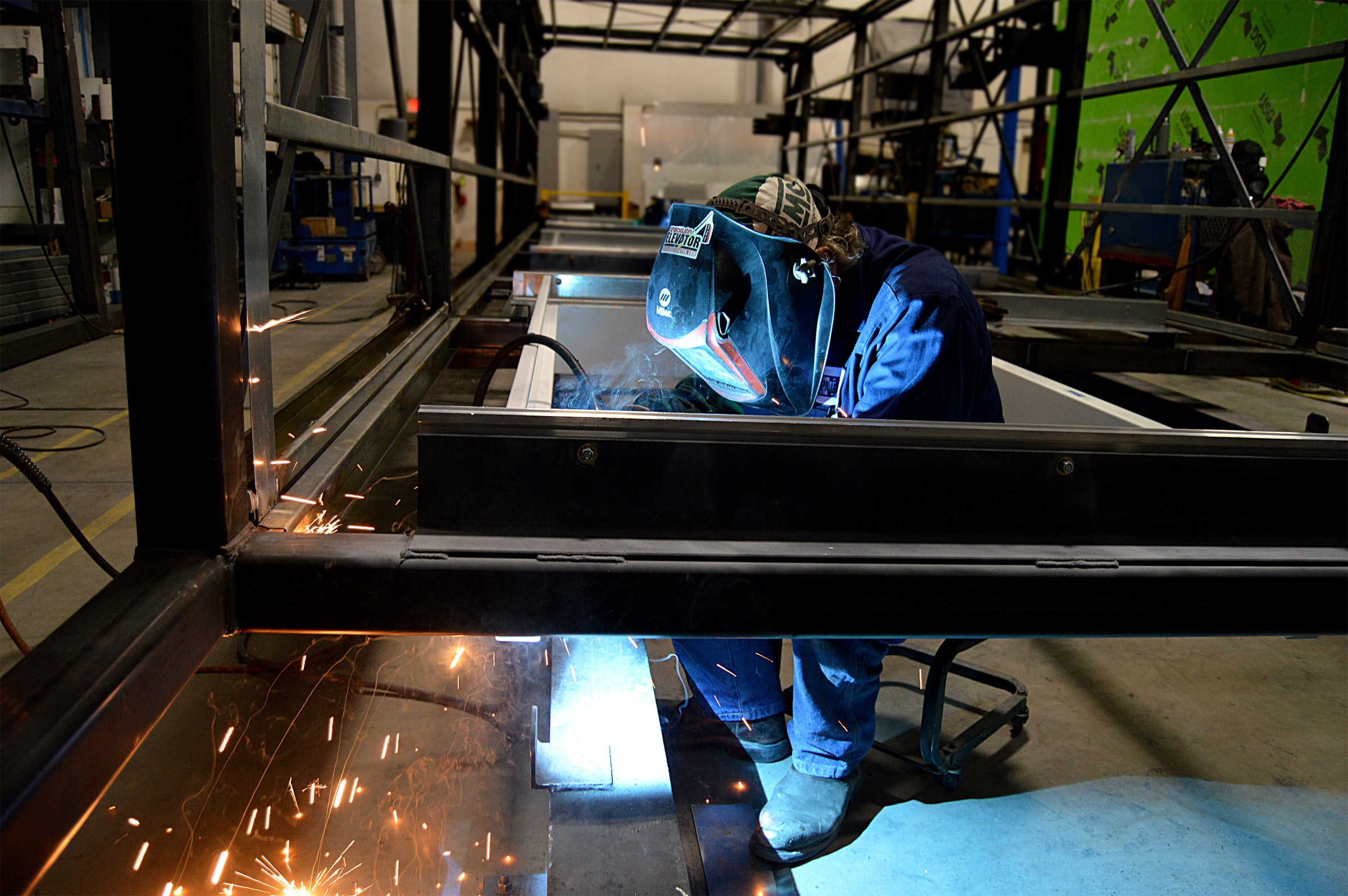Short on Labor: Factories Turn to Robots
Welding robots are supplementing human welders within factories. Credit: Russ Ward on Unsplash
In some of America’s most critical industrial sectors a critical input is in short supply: skilled people. In pharmaceuticals, Pfizer and Moderna face are struggling to find specialized workers to produce COVID-19 vaccines. A shortage of railroad workers is inhibiting the movement of essential supplies and good across the country. In Springfield, Missouri they are looking for welders for stainless steel. These cases are not isolated. The manufacturing workforce in America both skews older and is thus more impacted by COVID-19 while also having a negative industry perception by younger generations. Back in 2011, a Deloitte report showed manufacturing dead last among career industry choices for 18 to 24-year-old Americans. To build back resiliency in industry we must re-define the talent pipeline and career opportunities.
So what is being done by manufacturers to address the issues:
- An Ohio rubber parts factory tests higher wages.
- Manufacturers are participating in regional partnerships across communities such as Make It Better in Northeast Ohio and Automation Alley in Metro Detroit to drive engagement and training for prospective employees.
- Identifying a national industrial policy for critical segments like semiconductors.
- Enhancing tried and true technologies like robotics with better machine vision and tactile functionality to reduce labor needs in assembling, welding, and material handling functions.
- Integrating advanced technologies such as explainable machine learning software and cobots into their factory to provide resilience for process steps that require operators with specific qualifications and experience.
These plans alone are not enough to reverse the decline in America’s manufacturing labor force each subsequent business cycle. Until manufacturing is perceived as clean, innovative, and high reward, America’s best and brightest will remain in more lucrative sectors.
Visual Inspection
How America's Largest Cast Iron Pan Factory Makes Almost Two Million Pans per Month
Acoustic Monitoring
Also, Markus Lade discusses Working with Water: Challenges and AI Applications
Assembly Line
Making Welding Accessible to All
With the ongoing shortage of skilled workers and the pickup in the economy, suppliers of welding equipment are finding ways to making welding easier for those working in manufacturing. Automation is the leading technique among many.
“Manual welding is an area with a very high degree of repetitive motion injury, resulting in turnover and associated costs,” he said. “OSHA puts out a statistic that says any investment in safety yields a six-to-one payback. So, robotic welding is an investment in safety, as well as productivity and quality. Take all these factors into account and you get a pretty big payback number.”
Automating Carbon-Fiber Composite Fuselage Assembly
“During the last 10 years, increased commercial aircraft production rates have led to more interest in automating assembly processes,” Brieskorn points out. “To reduce process times and cost, automation is becoming more appealing to engineers.
“However, the main challenge is that large aircraft parts come with relatively high geometry deviations, so robots need sensor guidance,” says Brieskorn. “Strict requirements and tight tolerances in the final structures are also challenging for standard automation systems.”
How Paint Robots Reduce Rework
There are few wild beasts more fearsome and concerning to the everyday finishing engineer than the dread three R’s: Rework, Rejections and RMAs.
In finishing, particularly when it comes to spray processes, achieving the kind of consistency and quality customers expect requires a high degree of both reliability and precision. Experienced painters and operators – or elaborate automation systems – can be engineered to provide high output, but over time many parts will seep through the cracks and simply not get the attention they require.
Integrating Falkonry with Azure IoT
Falkonry Clue applies advanced analytics to multivariate time-series data to discover meaningful patterns. This valuable operational data is supplied to Clue’s powerful AI engine by leveraging Microsoft Azure’s IoT infrastructure. Clue is designed to fit seamlessly into Azure’s reference architecture thereby easing the integration process.
Connecting the plant to the cloud, the Azure IoT Hub acts as a bi-directional communications brain for all connected IoT devices – managing data transfers, updates, setting up credentials for every device, and defining access control policies. These connected devices include OPC UA enabled sources such as most SCADA systems that support the MQTT protocol for data transfer.
Mining 4.0 with SampleManager LIMS
The mining industry presents unique and complex challenges when it comes to data management. Responding to international regulations, integrating technologies used in different business units, controlling accurate inventory data and reliably managing mineral information are critical needs.
Companies in the mining industry need to efficiently manage all the variables that come into play, especially considering that it is a long production chain made up of diverse units that are physically separated from each other. Integrating the laboratory data with the rest of the production chain is key to improving operations and unlocking growth.
Surge Demand
Alaska Airlines trials AI to achieve big savings in jet fuel, lower carbon dioxide emissions, and improvements in its on-time performance and reliability.

